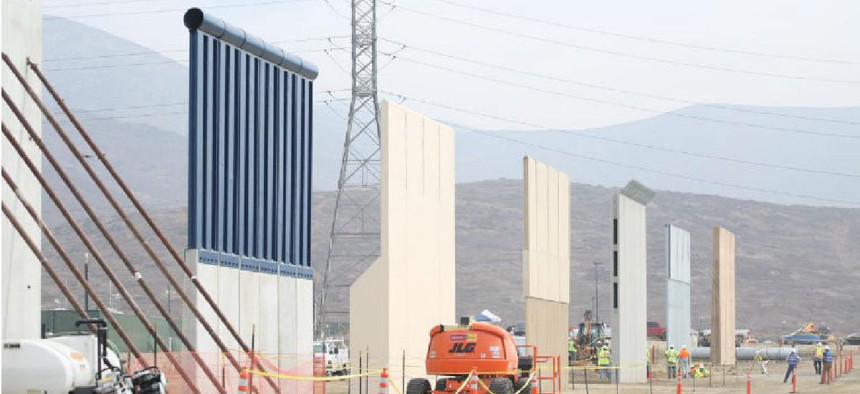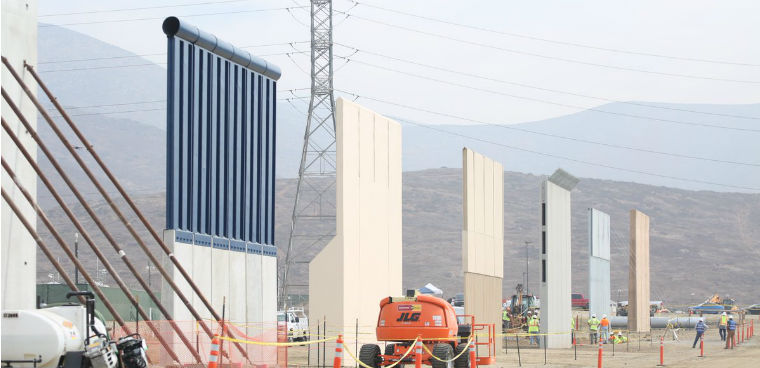Data on border tech performance a year away, says CBP

Homeland Security officials can't yet provide hard data on how effective border security technologies are, but the capability is on the way.

Prototypes of President Donald Trump's proposed border wall. (Photo: CBP San Diego)
Two top Department of Homeland Security and Customs and Border Protection officials told a congressional panel that they're working on ways to gauge the effectiveness of border security technology.
Integrated towers, sensors, video surveillance systems, aircraft and other technology all play a part in border security operations, CBP Acting Deputy Commissioner Ronald Vitiello said at a March 15 House hearing.
The Border and Maritime Security Subcommittee of the House Homeland Security Committee convened the hearing to get a sense of what could be achieved with the 10-year, $33 billion funding request from the administration to cover the proposed border wall and associated technology.
Vitiello said the latest proposal includes about 1,200 miles of new and replacement walls and secondary fencing, with $1.6 billion for technologies such as integrated fixed towers, remote video surveillance systems and communications systems.
However, Vitiello and DHS Undersecretary for Management Claire Grady told lawmakers their agencies can't provide detailed data on how effective such border security technologies are.
"We need to get better" at using data to show how it specifically contributes to border security, Vitiello said in response to a question from Rep. John Rutherford (R-Fla.). Collecting and analyzing detailed data on how technologies perform and contribute to security processes such as apprehensions at the border will help CBP develop credible, repeatable assessments for costs and placement of future technology, he said.
That analytical capability, Vitiello said, "is about a year or so out."
He said technologies such as remote video surveillance, ground sensors, biometric identification, advanced data reporting systems, non-intrusive X-ray detection systems and integrated fixed towers (IFTs) interlock with physical barriers and increased personnel for the most effective border security capability.
Physical border barriers would be supplemented by underground sensors to detect the seismic activity generated by attempts to tunnel beneath walls and fences, Vitello said.
Rebecca Gambler, director for Homeland Security and Justice at the Government Accountability Office, said DHS "has made progress" in installing and working with border technology in the last few years.
CBP had completed deployments of all planned remote video surveillance systems, mobile surveillance capability systems, as well as ground sensors. It is also well underway installing tower-based systems, with 15 of 53 of the IFT systems working in Arizona.





